
Journal of Urban Design
Scope & Guideline
Pioneering insights into the art and science of urban spaces.
Introduction
Aims and Scopes
- Interdisciplinary Urban Design Research:
The journal encourages research that bridges various disciplines such as architecture, sociology, environmental science, and urban planning, fostering a holistic approach to urban design. - Community and Stakeholder Engagement:
A significant focus on participatory design processes highlights the importance of involving communities and stakeholders in urban design, ensuring that diverse voices and needs are considered. - Sustainability and Resilience:
The journal emphasizes sustainable urban design practices and resilience strategies, especially in the context of climate change and urbanization, promoting designs that are environmentally responsible and adaptable. - Public Space and Social Interaction:
Research on the design and management of public spaces, and their role in fostering social interaction and community well-being, is a core area, reflecting the importance of accessible and inclusive urban environments. - Technological Innovations in Urban Design:
The integration of technology, including smart city concepts and data analytics, into urban design practices is explored, showcasing how technology can enhance urban environments and inform design decisions. - Cultural and Historical Contexts in Urban Design:
The journal also addresses the influence of cultural and historical contexts on urban design, examining how local identities and histories shape urban spaces.
Trending and Emerging
- Climate Adaptation and Resilience Strategies:
Recent publications increasingly focus on urban design strategies that enhance climate resilience, addressing the urgent need for cities to adapt to climate change impacts through innovative design solutions. - Public Health and Well-Being:
There is a growing emphasis on the relationship between urban design and public health, particularly how well-designed urban spaces can promote physical activity, mental health, and social cohesion. - Technological Integration in Urban Design:
Emerging themes include the use of technology in urban design, such as smart city initiatives and data-driven design processes, reflecting a trend towards leveraging technology for improved urban living. - Social Equity and Inclusion in Urban Spaces:
Research increasingly addresses social equity in urban design, focusing on creating inclusive spaces that cater to diverse populations, particularly marginalized communities. - Informal Settlements and Self-Organized Urban Design:
A notable trend is the exploration of informal settlements and self-organized urban design, examining how these areas can inform more sustainable and adaptable urban practices.
Declining or Waning
- Traditional Retail and Shopping Streets:
Research focused specifically on traditional retail environments and shopping streets has seen a decline, likely due to the increasing prevalence of e-commerce and changing consumer behaviors, leading urban designers to explore alternative urban forms. - Static Urban Design Models:
There is a noticeable decrease in papers advocating for rigid, static models of urban design. The trend is moving towards more dynamic, flexible approaches that can adapt to changing urban needs and contexts. - Single-Disciplinary Approaches:
The journal's emphasis on interdisciplinary research has led to a decline in articles that focus solely on traditional urban planning or architecture without integrating other relevant fields, such as sociology or environmental science. - Historical Preservation as a Sole Focus:
While historical context remains important, there is a waning emphasis on preservation-focused research that does not consider contemporary urban challenges, as the journal increasingly prioritizes innovative solutions over maintenance of existing structures. - Conventional Urban Theory:
The prevalence of papers centered on conventional urban theories has diminished, suggesting a shift towards more contemporary, practical applications and theories that address current urban issues.
Similar Journals
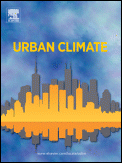
Urban Climate
Advancing Knowledge for Resilient Urban FuturesUrban Climate, published by Elsevier, is a leading peer-reviewed journal dedicated to advancing the understanding of interactions between urban areas and climate patterns. Since its inception in 2012, the journal has achieved an impressive reputation, currently holding a Q1 ranking in multiple categories, including Atmospheric Science, Environmental Science, Geography, Planning and Development, and Urban Studies. This positions it as a vital resource for researchers, professionals, and students interested in the multifaceted dynamics of urban environments and their climatic impacts. With an overarching goal to foster interdisciplinary collaboration, Urban Climate serves as a platform for innovative research designed to inform city planning and policy, enhance sustainability, and address climate-related challenges in urban settings. As the only journal solely focused on urban climate issues, it stands out as a crucial contributor to the academic discourse in this field, promoting open discussions and providing accessible insights critical for shaping resilient urban futures.
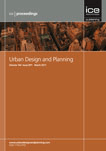
Proceedings of the Institution of Civil Engineers-Urban Design and Planning
Shaping the Landscape of Urban PlanningProceedings of the Institution of Civil Engineers-Urban Design and Planning is a leading scholarly journal published by EMERALD GROUP PUBLISHING LTD, dedicated to advancing knowledge and innovation in the fields of urban design and planning. With an ISSN of 1755-0793 and E-ISSN 1755-0807, this journal serves as a vital platform for researchers, professionals, and students to disseminate impactful studies and findings. It boasts impressive rankings, including Q1 in Architecture and notable positions in Civil and Structural Engineering and Urban Studies, underscoring its significance in the academic community. The journal's scope encompasses a diverse array of topics relevant to urban environments, encouraging interdisciplinary dialogue and exploration. Although it operates under traditional access, its contributions are invaluable, reflecting the latest developments and challenges within urban planning practices. Published regularly since 2009, the Proceedings of the Institution of Civil Engineers-Urban Design and Planning is vital for those seeking to enhance their understanding of sustainable urban development and design methodologies, making it a critical resource in its fields of study.

Journal of Urban Ethnology
Navigating the Complexities of Urban EthnographyJournal of Urban Ethnology, published by the Polish Academy of Sciences, Institute of Archaeology & Ethnology, is a premier scholarly journal focused on the multifaceted dimensions of urban life through an ethnographic lens. With a commitment to advancing the field of urban studies, this journal welcomes original research articles, case studies, and theoretical discussions that explore the rich tapestry of urban communities, cultural practices, and social dynamics. The journal plays a crucial role in fostering interdisciplinary dialogue among anthropologists, sociologists, urban planners, and cultural researchers, making it an invaluable resource for professionals, students, and scholars alike. While it currently operates under a traditional access model, the journal strives to contribute to an understanding of contemporary urban challenges and innovations, supporting the quest for sustainable and equitable urban futures. The ISSN for the journal is 1429-0618, ensuring its recognition in global academic databases.

Urban Planning
Elevating the discourse on spatial planning and development.Urban Planning is a leading academic journal published by COGITATIO PRESS, devoted to advancing the field of urban studies through rigorous research and innovative practice. Established as an Open Access journal in 2016, it offers a platform for scholars and practitioners alike to disseminate knowledge on urban development, spatial planning, and community engagement. With an impressive ranking in the Q1 category for Urban Studies and a notable Scopus rank of #71 out of 279, it reflects the journal's commitment to excellence and influence within its discipline. Based in Lisbon, Portugal, and dedicated to a global audience, Urban Planning encourages interdisciplinary collaboration and seeks to address the pressing challenges faced by urban areas, making it an essential resource for researchers, professionals, and students passionate about shaping sustainable cities. The journal, which contributes to the academic discourse through a robust review process and encourages contributions that engage diverse voices, is set to converge its insights from 2016 to 2025, solidifying its role as a pivotal resource in the urban studies field.
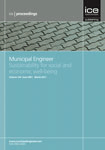
PROCEEDINGS OF THE INSTITUTION OF CIVIL ENGINEERS-MUNICIPAL ENGINEER
Innovating Urban Infrastructure for Tomorrow's ChallengesPROCEEDINGS OF THE INSTITUTION OF CIVIL ENGINEERS-MUNICIPAL ENGINEER is a prestigious journal dedicated to advancing the field of civil and structural engineering, specifically within the municipal context. Published by Emerald Group Publishing Ltd, this journal has established itself as a key resource for engineers, researchers, and educators seeking to explore innovative practices and emerging trends in urban infrastructure and public works. With a Scopus Rank of 160 out of 379, placing it in the 57th percentile and categorized in Q3 for 2023, it reflects its relevance and contribution to the scholarly community. The journal publishes high-quality research findings that aim to address the complex challenges faced in municipal engineering, making it an invaluable asset for those looking to inform their practices with cutting-edge knowledge. Although it offers traditional access options, the importance of its contributions to engineering solutions makes the journal an essential read for anyone involved in the design, construction, and management of municipal projects. Authors are encouraged to submit their work and contribute to shaping the future of civil engineering through this well-regarded publication, which has been converging expertise since 1992.
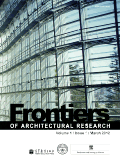
Frontiers of Architectural Research
Connecting Culture, Environment, and Technology in ArchitectureFrontiers of Architectural Research, published by KEAI PUBLISHING LTD, stands at the forefront of interdisciplinary scholarship, addressing contemporary challenges in the fields of architecture, urban studies, building and construction, and archaeology. Since its establishment in 2012, this open-access journal has rapidly gained recognition, achieving prestigious rankings in the 2023 category quartiles, including Q1 placements in both Architecture and Archaeology. With an impressive Scopus rank of #5 out of 354 in Archaeology and #10 out of 189 in Engineering - Architecture, it demonstrates its significant influence and contribution to advancing architectural research. Frontiers of Architectural Research embraces a broad scope that fosters innovative discourse and practical solutions, catering to a diverse audience of researchers, professionals, and students keen on exploring the intersection of culture, environment, and technology. By ensuring immediate access to research findings, the journal not only enhances the visibility of scholarly work but also encourages collaborative dialogues that shape the future of architectural practice.
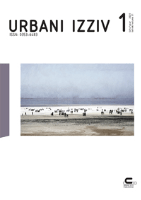
Urbani Izziv-Urban Challenge
Innovating Solutions for Sustainable CitiesUrbani Izziv - Urban Challenge, a prominent journal in the field of urban studies and planning, is published by the Urban Planning Institute of the Republic of Slovenia. Established in 1993, this Open Access journal aims to foster the dissemination of cutting-edge research and innovative ideas in architecture, cultural studies, and urban development. With an impressive impact, it holds a Q2 ranking in both Architecture and Cultural Studies, while maintaining a solid presence in Geography, Planning and Development, and Urban Studies categories. As of 2023, it ranks within the top 25% of journals in the Cultural Studies discipline, highlighting its pivotal role in shaping urban discourse. Researchers and practitioners alike will find the journal an invaluable resource for exploring the intertwined challenges of urbanization, cultural evolution, and sustainable development. With an expansive convergence from 1994 to 2024, it continues to attract influential contributions that illuminate the dynamics of urban life in Slovenia and beyond.
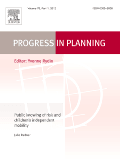
PROGRESS IN PLANNING
Exploring New Dimensions in Geography and DevelopmentPROGRESS IN PLANNING is a premier academic journal published by PERGAMON-ELSEVIER SCIENCE LTD, renowned for its impactful contributions to the fields of geography, urban planning, and development. With an impressive impact factor situating it in the Q1 quartile of its category for 2023, this journal ranks a notable #38 out of 821 in the Scopus listings, placing it in the 95th percentile within the realm of social sciences. Since its inception in 1973, the journal has established itself as a critical platform for the dissemination of innovative research and practical insights, fostering a deeper understanding of contemporary urban challenges and planning strategies. Although currently not offering open access, PROGRESS IN PLANNING continues to attract a diverse array of submissions, providing a vital resource for researchers, professionals, and students seeking to advance their knowledge and contribute to the evolution of planning practices worldwide.

Open House International
Shaping Innovative Discussions on the Built EnvironmentOpen House International is a distinguished peer-reviewed journal that serves as a vital resource in the fields of Architecture, Urban Studies, and Geography, Planning and Development. Published by Emerald Group Publishing Ltd, the journal circulates valuable insights and research findings that address contemporary challenges and innovations within urban environments. With an impressive 2023 Scopus ranking that places it in the Q2 category in Architecture and Q3 in Geography, Planning and Development, the journal is recognized for contributing significantly to scholarly discourse. Although it follows a traditional access model, the journal's commitment to curating high-quality content remains paramount. As it transitions into a new decade of publishing, from 2007 to 2024, Open House International continues to attract submissions that push the boundaries of knowledge in urban and architectural studies, engaging researchers, professionals, and students alike in the vibrant dialogue on the built environment.

Journal of Urban Mobility
Shaping the Future of Urban Transportation SolutionsThe Journal of Urban Mobility, published by ELSEVIER, is a premier open access journal dedicated to advancing the understanding of urban transportation dynamics. Since its inception in 2021, this journal has focused on addressing the complexities of mobility within urban settings, encompassing areas of geography, planning, and transportation. With an ISSN of 2667-0917, it attracts considerable attention, as evidenced by its Scopus rankings—positioned at #311 in the Geography, Planning and Development category and #77 in Transportation. The Journal aims to foster interdisciplinary dialogue, offering researchers, professionals, and students a platform for disseminating innovative studies and policy analyses that shape the future of urban mobility. Accessible through a comprehensive open access model, it ensures a wide reach and impact, making significant contributions to the field until at least 2024.